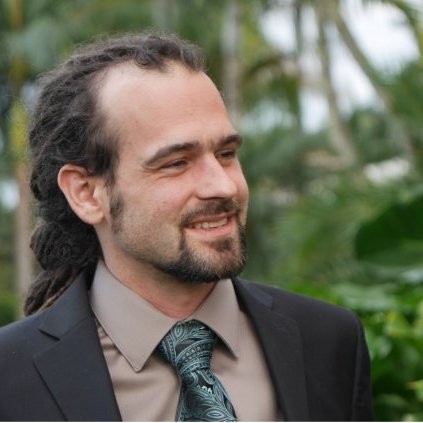In this article, we will focus on our Telehealth Podcast. The podcast is about telehealth solution benefits.
Until recently, telemedicine had been developing gradually and slowly, but with the arrival of the COVID-19 pandemic, everything began to change quickly, and the pandemic made its own adjustments to the treatment of patients and people with other diseases who had to be treated at home themselves because it became unsafe for them to go into overcrowded hospitals. An excellent solution, in this case, was telehealth – the ability to treat and diagnose online. Telehealth is a window into the future. Of course, it will not be able to completely replace traditional medicine, but telehealth is already gaining wide popularity.
About our guest
Merritt Widen has huge experience in the telehealth industry. He is Co-Founder, Chairman, and CEO at Clarity Telehealth, Inc. Clarity Telehealth provides structured mental health support via telehealth to patients undergoing major life-changing surgeries, such as spinal, bariatric, neurosurgical, and open-heart procedures. Also, Merritt is Co-Chairman of the Board of Forefront Telecare Inc., the largest provider of behavioral services via telehealth to smaller healthcare facilities in rural America.
What is the difference between telehealth and telemedicine?
Telemedicine mainly works with data – for example, remote monitoring of patients collects the necessary data for caregivers, which can use the collected data to see at what stage of the disease the patient is. Telehealth is more about consultations and treatment with the help of remote interaction, usually with the use of video or audio by a doctor or other healthcare specialist, without using data from complex systems and devices.
What can be treated via telehealth?
Almost everything can be treated with telehealth to the extent that it is about a conversation, but the best options for using telehealth applications, according to Merritt, are behavioral treatment. Many studies prove the effectiveness of this kind of treatment. It shows good results, and patients are also satisfied with the treatment.
Dermatology also shows good results in terms of treatment due to the fact that the patient just needs to demonstrate his skin surface and the dermatologist can easily determine what he is dealing with and how it can be treated.
Ophthalmology successfully uses the capabilities of telehealth in the treatment of patients, as there is also often enough demonstration through video or photos of the surface of the patient’s eye to determine the problem. It is impossible to deny the possibility of using telehealth in such practices as cardiology, where a cardiologist needs to listen to the patient’s heart, but often patients may lack specialized equipment, it can be prohibitively expensive, and in such cases, it is quite difficult to consult and even more so to treat patients, and sometimes it is impossible.
How has the COVID-19 pandemic changed telehealth?
According to Merritt, the scope of telehealth has changed a lot in response to the COVID-19 pandemic, as regulators had to make quick decisions from changing the use and distribution of telehealth not only in rural areas where there may be no regular hospital, and even doctors, to the widespread use of telehealth solutions, as when COVID-19 was at its peak, people with other diseases simply could not receive help due to overcrowded hospitals.
People also used to think that it was not profitable to use telehealth solutions, and older people especially thought that it was too difficult to use telehealth solutions; however, they realized that it turns out to be quite simple and they can use it more often. People were also able to understand that telehealth is more economical than visiting a doctor’s office. Moreover, people have changed their attitudes to telehealth – they began to perceive it as an excellent opportunity to be treated without leaving home. Society has realized that it turns out to be quite convenient to consult and be treated without visiting a doctor’s office.
What is the difference between telehealth and telemedicine?
In the field of telehealth, difficulties often arise with specialized interaction with patients – for example, if a therapist wants to listen to your lungs or a cardiologist wants to listen to your heart, unfortunately, we still have to put up with this. The possibility of using specialized medical equipment is not excluded, but it is quite expensive, and in such cases, it is certainly better to consult a doctor and go to a hospital.
Will telehealth be able to fully replace doctor visits in hospitals?
Merritt answered, “Not yet for sure,” because people still need to go to hospitals in order to take tests, undergo examinations, undergo tomography, get X-rayed, and many other things that cannot be done at home. Doctors will also not be able to look after you for a very long time only remotely, so you will still have to visit a doctor. In addition, many diseases can much more effectively be treated inside the walls of a hospital.
Is telehealth private and secure?
Yes, it is quite private and secure, as there are regulations, such as HIIPA, that require quite a lot of effort to ensure data and security when treating patients with online medical solutions. HIIPA allowed the use of such communication solutions as FaceTime and Skype during the COVID-19 pandemic that does not have HIIPA correspondences, but now all telehealth solutions are obliged to be HIIPA-encrypted to ensure the safety of patients.
What are some examples of telehealth solutions?
There are quite a few platforms and companies in telehealth that deal with telehealth, many companies that deal with behavioral, primary care, and many companies, such as Teledoc, that are going to become the first line of care for patients with diseases such as colds, flu, and other mild diseases. Also, for example, Clarity provides telehealth clinical services.
DevOps as a ServiceDevOps on autopilot
CTO as a ServiceStregthen your team
Software testingEnsure software quality
Discovery phasePlan your priduct from a to z
Cloud ServicesGeneral information about healthcare cloud services
Google Cloud ServicesEnsuring confidentiality when working with medical systems
AWS Cloud ServicesServices specially designed for the healthcare industry
Microsoft Cloud ServicesPlatform processing, analyzing and sharing medical data


